The Trap: What Happened to Our Dream of Freedom is a BBC television documentary series by English filmmaker Adam Curtis, well known for other documentaries including The Century of the Self and The Power of Nightmares. It originally aired in the United Kingdom on BBC Two in March 2007. The series consists of three 60-minute programmes which explore the modern concept and definition of freedom, specifically, "how a simplistic model of human beings as self-seeking, almost robotic, creatures led to today's idea of freedom."
| The Trap: What Happened to Our Dream of Freedom | |
|---|---|
Title screen | |
| Written by | Adam Curtis |
| Directed by | Adam Curtis |
| Country of origin | United Kingdom |
| Original language(s) | English |
| No. of series | 1 |
| No. of episodes | 3 |
| Production | |
| Executive producer(s) | Stephen Lambert |
| Producer(s) | Adam Curtis Lucy Kelsall |
| Running time | 180 mins (in three parts) |
| Production company(s) | BBC |
| Release | |
| Original network | BBC Two |
| Picture format | 16:9 1080i |
| Audio format | Stereo |
| Original release | 11 March – 25 March 2007 |
| Chronology | |
| Preceded by | The Power of Nightmares (2004) |
| Followed by | All Watched Over by Machines of Loving Grace (2011) |
Screenplay
The series was originally to be called Cold Cold Heart and was scheduled for broadcast in 2006. Although it is not known what caused the delay in transmission, nor the change in title, it is known that a DVD release of Curtis's previous series The Power of Nightmares had been delayed due to problems with copyright clearance due to the large quantity of archive material used in Curtis's montage technique.
Another documentary series (title unknown) based on very similar lines—"examining the world economy during the 1990s"—was to have been Curtis's first BBC TV project upon moving to the BBC's Current Affairs unit in 2002, shortly after producing Century of the Self.
Part 1. 'F**k You Buddy'
In part one, Curtis examines the rise of game theory during the Cold War and the way in which its mathematical models of human behaviour filtered into economic thought.
The programme traces the development of game theory, with particular reference to the work of John Nash (the mathematician portrayed in A Beautiful Mind), who believed that all humans are inherently suspicious and selfish creatures that strategize constantly. Building on his theory, Nash constructed logically consistent and mathematically verifiable models, for which he won the Bank of Sweden Prize in Economic Sciences, commonly referred to as the Nobel Prize in Economics. He invented system games that reflected his beliefs about human behaviour, including one he called 'Fuck You Buddy' (later published as "So Long Sucker"), in which the only way to win was to betray your playing partner, and it is from this game that the episode's title is taken. These games were internally coherent and worked correctly as long as the players obeyed the ground rules that they should behave selfishly and try to outwit their opponents, but when RAND's analysts tried the games on their own secretaries, they were surprised to find that instead betraying each other, the secretaries cooperated every time. This did not, in the eyes of the analysts, discredit the models, but proved that the secretaries were unfit subjects. "This is in contrast to the proposed theoretical solution in which the two secretaries would have shared the amount g only, with the first secretary receiving m in addition. Upon inquiry, it developed that they had entered into the experiment with the prior agreement to share all proceeds equally!"
It was not known at the time that Nash was suffering from paranoid schizophrenia, and as a result, he was deeply suspicious of everyone around him—including his colleagues—and was convinced that many were involved in conspiracies against him. It was this mistaken belief that led to his view of people as a whole that formed the basis for his theories. Footage of an older and wiser Nash was shown in which he acknowledges that his paranoid views of other people at the time were false.
Curtis examines how game theory was used to create the US's nuclear strategy during the Cold War. Because no nuclear war occurred, it was believed that game theory had been correct in dictating the creation and maintenance of a massive American nuclear arsenal—because the Soviet Union had not attacked America with its nuclear weapons, the supposed deterrent must have worked. Game theory during the Cold War is a subject that Curtis examined in more detail in the To The Brink of Eternity part of his first series, Pandora's Box, and he reuses much of the same archive material in doing so.
Another strand in the documentary is the work of R.D. Laing, whose work in psychiatry led him to model familial interactions using game theory. His conclusion was that humans are inherently selfish and shrewd and spontaneously generate stratagems during everyday interactions. Laing's theories became more developed when he concluded that some forms of mental illness were merely artificial labels, used by the state to suppress individual suffering. This belief became a staple tenet of counter-culture in the 1960s. Reference is made to an experiment run by one of Laing's students, David Rosenhan, in which bogus patients, self-presenting at a number of American psychiatric institutions, were falsely diagnosed as having mental disorders, while institutions, informed that they were to receive bogus patients, misidentified genuine patients as imposters. The results of the experiment were a disaster for American psychiatry, because they destroyed the idea that psychiatrists were a privileged elite that was genuinely able to diagnose, and therefore treat, mental illness.
Curtis credits the Rosenhan experiment with the inspiration to create a computer model of mental health. Input to the program consisted of answers to a questionnaire. Curtis describes a plan of the psychiatrists to test the computer model by issuing questionnaires to "hundreds of thousands" of randomly selected Americans. The diagnostic program identified over 50% of the ordinary people tested as suffering from some kind of mental disorder. According to Dr. Jerome Wakefield, who refers to the test as "these studies", the results it found were viewed as a general conclusion that "there is a hidden epidemic." Curtis and leaders in the psychiatric field never addressed whether the computer model was being tested or used without having been validated in any way, but rather used the model to justify vastly increasing the portion of the population they were treating.
In an interview, the economist James M. Buchanan decries the notion of the "public interest", asking what it is and suggesting that it consists purely of the self-interest of the governing bureaucrats. Buchanan also proposes that organisations should employ managers who are motivated only by money. He describes those who are motivated by other factors—such as job satisfaction or a sense of public duty—as "zealots".
At the start of the 1970s, the theories of Laing and the models of Nash began to converge, leading to a popular belief that the state (a surrogate family) was purely and simply a mechanism of social control which calculatedly kept power out of the hands of the public. Curtis shows that it was this belief which allowed the theories of Hayek to look credible, and underpinned the free-market beliefs of Margaret Thatcher, who sincerely believed that by dismantling as much of the British state as possible—and placing former nationalised institutions into the hands of public shareholders—a form of social equilibrium could be reached. This was a return to Nash's work, in which he proved mathematically that if everyone pursued their own interests, a stable, yet perpetually dynamic, society would result.
The episode ends with the suggestion that this mathematically modelled society is run on data—performance targets, quotas, statistics—and these figures, combined with the exaggerated belief in human selfishness, have created "a cage" for Western humans. The precise nature of the "cage" is to be discussed in part two.
Contributors
- John Nash, 1994 winner of the Nobel Memorial Prize in Economic Sciences
- Friedrich von Hayek, Nobel economist and political philosopher
- James M. Buchanan, Nobel economist famous for his work on public choice theory
- Professor Thomas Schelling, economist and game theorist
- Robert Kavesh, government economist, 1950s
- Philip Mirowski, historian and philosopher of economics and politics
- Alain Enthoven, nuclear strategist at RAND Corporation, 1956–60
- R.D. Laing, psychiatrist
- Dr Morton Schatzman, psychiatrist and colleague of R.D. Laing
- Clancy Sigal, colleague of R.D. Laing
- Madsen Pirie, founder of the Adam Smith Institute
- Sir Antony Jay, co-author of BBC comedy series Yes Minister
- David Rosenhan, attendee of R.D. Laing's talks in the US; creator of the Rosenhan experiment
- Paul McHugh, psychiatrist-in-chief at Johns Hopkins Hospital
- Robert Spitzer, chair of the DSM-III task force
- Dr Jerome Wakefield, psychiatrist
Part 2. 'The Lonely Robot'
Part two reiterated many of the ideas of the first part, but developed the theme that drugs such as Prozac and lists of psychological symptoms which might indicate anxiety or depression were being used to normalise behaviour and make humans behave more predictably, like machines.
This was not presented as a conspiracy theory, but as a logical (although unpredicted) outcome of market-driven self-diagnosis by check-list based on symptoms, but not actual causes, discussed in part one.
People with standard mood fluctuations diagnosed themselves as abnormal. They then presented themselves at psychiatrist's offices, fulfilled the diagnostic criteria without offering personal histories, and were medicated. The alleged result is that vast numbers of Western people have had their behaviour and mental activity modified by SSRIs without any strict medical necessity.
The episode also showed a clip of a fight in a Yanomami village from the film The Ax Fight by Napoleon Chagnon and Tim Asch. According to Chagnon the fight is an example of the impact of kin selection on humans, since the people fighting chose sides on the basis of kinship. Curtis interviews Chagnon and puts to him the assertion of fellow anthropologist Brian Ferguson that much of the Yanamamo violence, particularly its intensity, was very strongly influenced by the presence of Westerners handing out goods which the tribesmen fought over; in this case the goods were highly prized and useful machetes. Chagnon, however, insists that his presence had had no influence whatsoever on the situation, citing the fact that similar fights happened when he wasn't present, which he also documented through informants. Curtis asked, "You don't think a film crew in the middle of a fight in a village has an effect?" Chagnon replied, "No, I don't," and immediately stopped the interview.
Footage of Richard Dawkins propounding his gene-centered view of evolution is shown, with archive clips spanning two decades to emphasise how the severely reductionist ideas of programmed behaviour have slowly been absorbed by mainstream culture. (Later, however, the documentary gives evidence that cells are able to selectively replicate parts of DNA dependent on current needs. According to Curtis, such evidence detracts from the simplified economic models of human beings.) This brings Curtis back to the economic models of Hayek and the game theories of the Cold War. Curtis explains how, with the "robotic" description of mankind apparently validated by geneticists, the game theory systems gained even more currency with society's engineers.
The programme describes how the Clinton administration gave in to market theorists in the US and how New Labour in the UK decided to measure everything it could by introducing such arbitrary and unmeasurable targets as:
- Reduction of hunger in Sub-Saharan Africa by 48%
- Reduction of global conflict by 6%
It also introduced a rural community vibrancy index in order to gauge the quality of life in Britain's villages and a birdsong index to measure the apparent decline of wildlife.
In industry and public services, this way of thinking led to a plethora of targets, quotas and plans. It was meant to set workers free to achieve these targets in any way they chose. What the government did not realise was that the players, faced with impossible demands, would cheat.
Curtis describes how, in order to meet arbitrary targets:
- Lothian and Borders Police reclassified dozens of criminal offences as "suspicious occurrences" in order to keep them out of crime figures;
- Some NHS hospital trusts created the unofficial post of "The Hello Nurse," whose sole task it was to greet new arrivals in order to claim for statistical purposes that the patient had been "seen", even though no treatment or examination took place during the encounter;
- NHS managers took the wheels off trolleys and reclassified them as beds, while simultaneously reclassifying corridors as wards, in order to falsify Accident & Emergency waiting times statistics.
In a section called 'The Death of Social Mobility', Curtis describes how the theory of the free market was applied to education. In the UK, the introduction of school performance league tables was intended to give individual schools more power and autonomy, to enable them to compete for pupils, the theory being that it would motivate the worst-performing schools to improve; it was an attempt to move away from the rigid state control that had offered little choice to parents while failing to improve educational standards, and towards a culture of free choice and incentivisation, without going as far as privatising the schools. Following publication of the school league tables, wealthier parents moved into the catchment areas of the best schools, causing house prices in those areas to rise dramatically—ensuring that poor children were left with the worst-performing schools. This is just one aspect of a more rigidly stratified society which Curtis identifies
Watch movie Cold Cold Heart Film online on Amazon
Watch movie Cold Cold Heart Film online
Watch The Movie On PrimeDiljale- The Burning Heart Full HD Movie Download

Hattrick Full HD Movie Download

Humdum (2005) Full HD Movie Download
.jpg)
Habari Full HD Movie Download
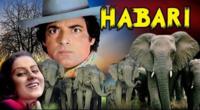
Trinetra Full HD Movie Download

Prem Geet Full HD Movie Download
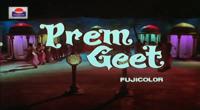
Ashanti Full HD Movie Download

Hifazat (1975) Full HD Movie Download
.jpg)
Jigarwala Full HD Movie Download

Chadi Jawani Budhe Nu Full HD Movie Download
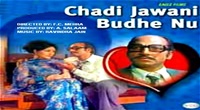
Addhuri: Achhu-Rachchu Love Story Full HD Movie Download

Gunehgar Kaun Full HD Movie Download
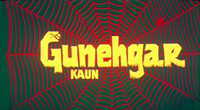
Daya Nayak- License To Kill Full HD Movie Download

Devi Parasakthi Full HD Movie Download
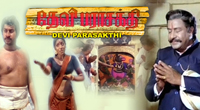
Konte Kodallu Full HD Movie Download

Triloka Sundari Full HD Movie Download
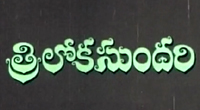
Lakshmi Kataksham Full HD Movie Download
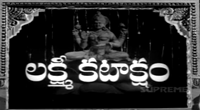
Khwab Full HD Movie Download

Mujhse Dosti Karoge Full HD Movie Download

Kabhi Kabhi Full HD Movie Download
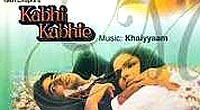
Badmaash Company Full HD Movie Download
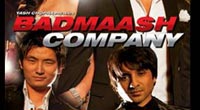
Download latest Movie from bollywood
- 1> baaghi 3
- 2> THE SKY IS PINK MOVIE FULL STORY AND REVIEW
- 3> Luka Chuppi
- 4> TO ALL THE BOYS I’VE LOVED BEFORE
- 5> Kabir Singh
- 6> Street Dancer 3D
- 7> Simmba
- 8> Gone Girl
- 9> The Girl Who Lived
- 10> Ludo
- 11> DILWALE DULHANIA LE JAYENGE
- 12> GUILTY
- 13> The Godfather
- 14> Adventures of Rusty
- 15> Sooryavanshi
- 16> Satyameva Jayate 2
- 17> Thappad
- 18> Bhool Bhulaiyaa 2
- 19> KGFChapter 2
- 20> Mardaani 2
- 21> Pinjar
- 22> Shivaji maharaj
- 23> Ek Villian 2
- 24> Hungama 2
- 25> Divergent
- 26> Mumbai Saga
- 27> The Internship
- 28> HIT (telugu)
- 29> Panga
- 30> The perfect date
- 31> 16 December
- 32> Gopala Gopala (Telugu)
- 33> Brahmastra
- 34> Gangubai Kathiawadi
- 35> Manmadhudu
- 36> Nenu local
- 37> Mahanati
- 38> Shatamanam bavathi
- 39> Lagaan
- 40> After
- 41> MOM
- 42> Shamshera
- 43> Raguvaran BTech
- 44> Khakee
- 45> The villain
- 46> OM
- 47> Mr. perfect
- 48> Bueatifull mind
- 49> Hichki
- 50> Gabbar Singh
- 51> Jogi
- 52> Before Sunrise
- 53> Before Sunset
- 54> Before Midnight
- 55> The Big Bull
- 56> Top Gun: Maverick
- 57> The Purge
- 58> The Sky is Pink
- 59> Laxmmi Bomb
- 60> Sadak 2
- 61> Sufna
- 62> Prithviraj
- 63> PK
- 64> Coolie No 1(2020)
- 65> Black Widow
- 66> Dear Zindagi
- 67> Dil Bechara
- 68> PHIR HERA PHERI
- 69> WAR
- 70> Dostana
- 71> RRR: Roudram Ranam Rudhiram
- 72> Maidan
- 73> Dabbang 3
- 74> Chhalaang
- 75> life as we know it
- 76> SherShaah
- 77> Sandeep Aur Pinky Faraar
- 78> Event Horizon
- 79> 83
- 80> Radhe: Your Most Wanted Bhai
- 81> Gunjan Saxena: The Kargil Girl
- 82> Mr India
- 83> Vivah
- 84> Anokha Bandhan
- 85> Ghost
- 86> Bhoot: Part One - The Haunted Ship
- 87> Haseen Dilruba
- 88> Laal Singh Chaddha
- 89> Qismat
- 90> Rajput
- 91> Drive
- 92> Dil Chahta Hai
- 93> Dil Ki Baazi
- 94> Dil Ka Rishta
- 95> Teesri Manzil
- 96> Dil
- 97> Love Aaj Kal
- 98> Khaali Peeli
- 99> Bunty Aur Babli 2
- 100> Atrangi Re
- 101> Gulabo Sitabo
- 102> Jodi
- 103> Suraj Pe Mangal Bhari
- 104> Deewana
- 105> Attack
- 106> Sardar Udham Singh
- 107> Toofan
- 108> THE LOVEBIRDS
- 109> Jersey
- 110> Ginny Weds Sunny
- 111> Thalaivi
- 112> Shiddat
- 113> Angels vs Zombies
- 114> Koi Mil Gya
- 115> Thank God
- 116> Bhuj: The Pride of India
- 117> Hum Aapke Hain Kaun
- 118> The Platform
- 119> Bird Box
- 120> Roohi Afzana
- 121> Torbaaz
- 122> Nikamma
- 123> World War Z
- 124> Extraction
- 125> Train to Busan
- 126> Life of Pi
- 127> SHAADI MEIN JROOR AANA
- 128> Himmat Aur Mehnat
- 129> To All The Boys: P.S. I Still Love You
- 130> Mimi
- 131> Good Newwz
- 132> Shubh Mangal Zyada Saavdhan
- 133> Raabta
- 134> Harry Potter and the Philosopher's Stone
- 135> Harry Potter and the Chamber of Secrets
- 136> Chhapaak
- 137> War of the Worlds
- 138> Harry Potter and the Prisoner of Azkaban
- 139> Harry Potter and the Goblet of Fire
- 140> MURDER MYSTERY
- 141> Shakuntala Devi
- 142> Bachchan Pandey
- 143> Jayeshbhai Jordar
- 144> Sheer Qorma
- 145> Saina
- 146> 'O' Pushpa I hate tears
- 147> Kedarnath
- 148> MS Dhoni The Untold Story
- 149> Chhichhore
- 150> Badhaai Ho
- 151> Unstoppable
- 152> Oz the Great And Powerful
- 153> The Girl on the Train
- 154> Haathi Mere Saathi 2020
- 155> The Conjuring: The Devil Made Me Do It
- 156> Gandhi Se Pehle Gandhi
- 157> The Song of Scorpions
- 158> Srimanthudu
- 159> Hello Guru Prema Kosame
- 160> Beauty and The Beast
- 161> Black Panther
- 162> Charlie and the Chocolate Factory
- 163> Bole Chudiyan
- 164> Fidaa
- 165> Duvvada Jagannadham
- 166> Bruce Lee: The Fighter
- 167> Hyper
- 168> Yaara
- 169> Red (2020)
- 170> Shivam
- 171> That Is Mahalakshmi
- 172> Nishabdham
- 173> Aashram 2020 web series
- 174> Laxmii
- 175> Mismatched
- 176> STUDENT OF THE YEAR 2
- 177> NAIL POLISH
- 178> Ramprasad Ki Tehrvi
- 179> KAAGAZ
- 180> 12 o Clock
- 181> The Power
- 182> bolo hau
- 183> Tribhanga
- 184> JAMUN
- 185> Madam Chief Minister
- 186> Maasaab
- 187> Aadhaar
- 188> Tanhaji
- 189> Bhaagi 3
- 190> Bhootnath
- 191> MALANG
- 192> Jai Mummy Di
- 193> Haathi Mere Saathi 2021
- 194> Shakeela
- 195> Unpaused
- 196> Annayya
- 197> Vamsoddharakudu
- 198> Mrugaraju
- 199> Narasimha Naidu
- 200> Sankranti
- 201> Manasu Maata Vinadhu
- 202> Anjaane
- 203> Apaharan
- 204> Bachke Rehna Re Baba
- 205> Bewafaa
- 206> Roohi
- 207> Radhe
- 208> Zindagi Khoobsoorat Hai
- 209> Yeh Mohabbat Hai
- 210> Yeh Kya Ho Raha Hai?
- 211> The Tomorrow War
- 212> DehradunDiary
- 213> Meri Shaadi Karaoo
- 214> Matruu Ki Bijlee Ka Mandola
- 215> No One Killed Jesica
- 216> Aag Ka Goola
- 217> Eight Million Dollars
- 218> Three Hundred
- 219> Cats and Dog
- 220> Decoy
- 221> Gold Rush
- 222> You Have Got Mail
- 223> Final Destination three
- 224> Tofan
- 225> Jungle
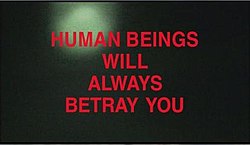 Story of movie Cold Cold Heart Film :
Story of movie Cold Cold Heart Film : 